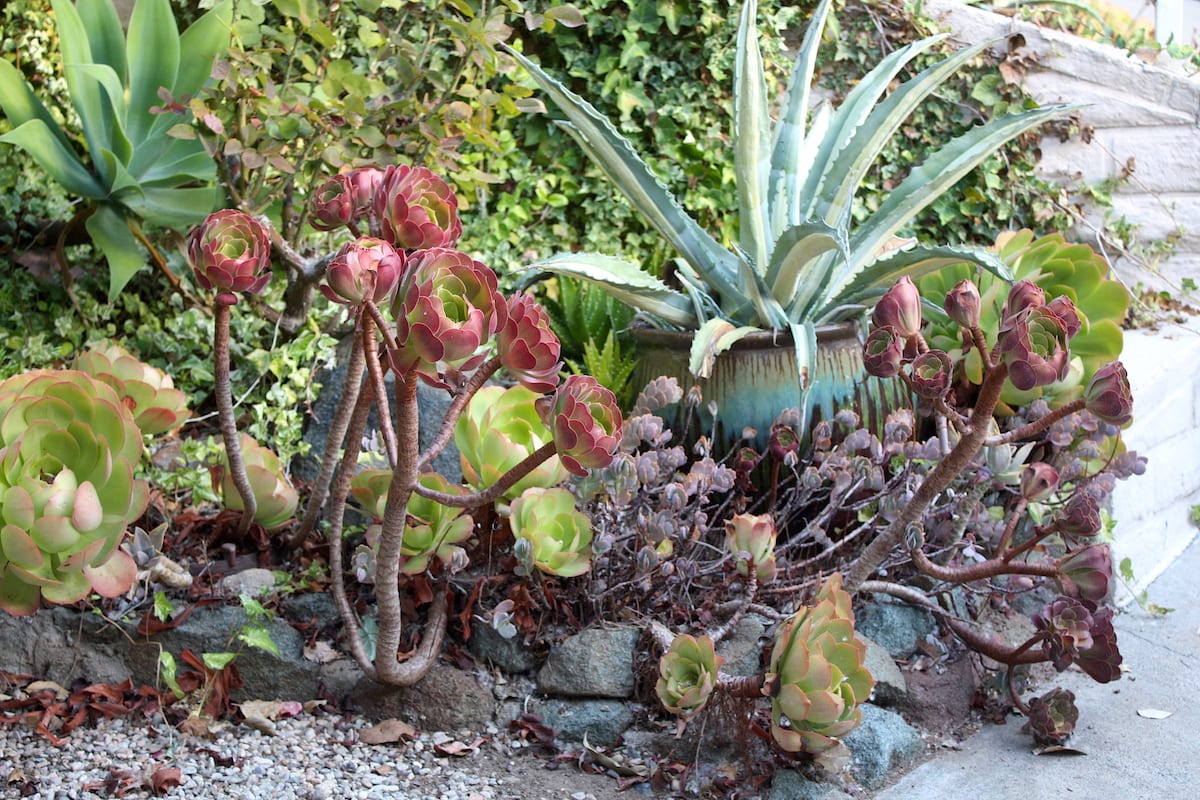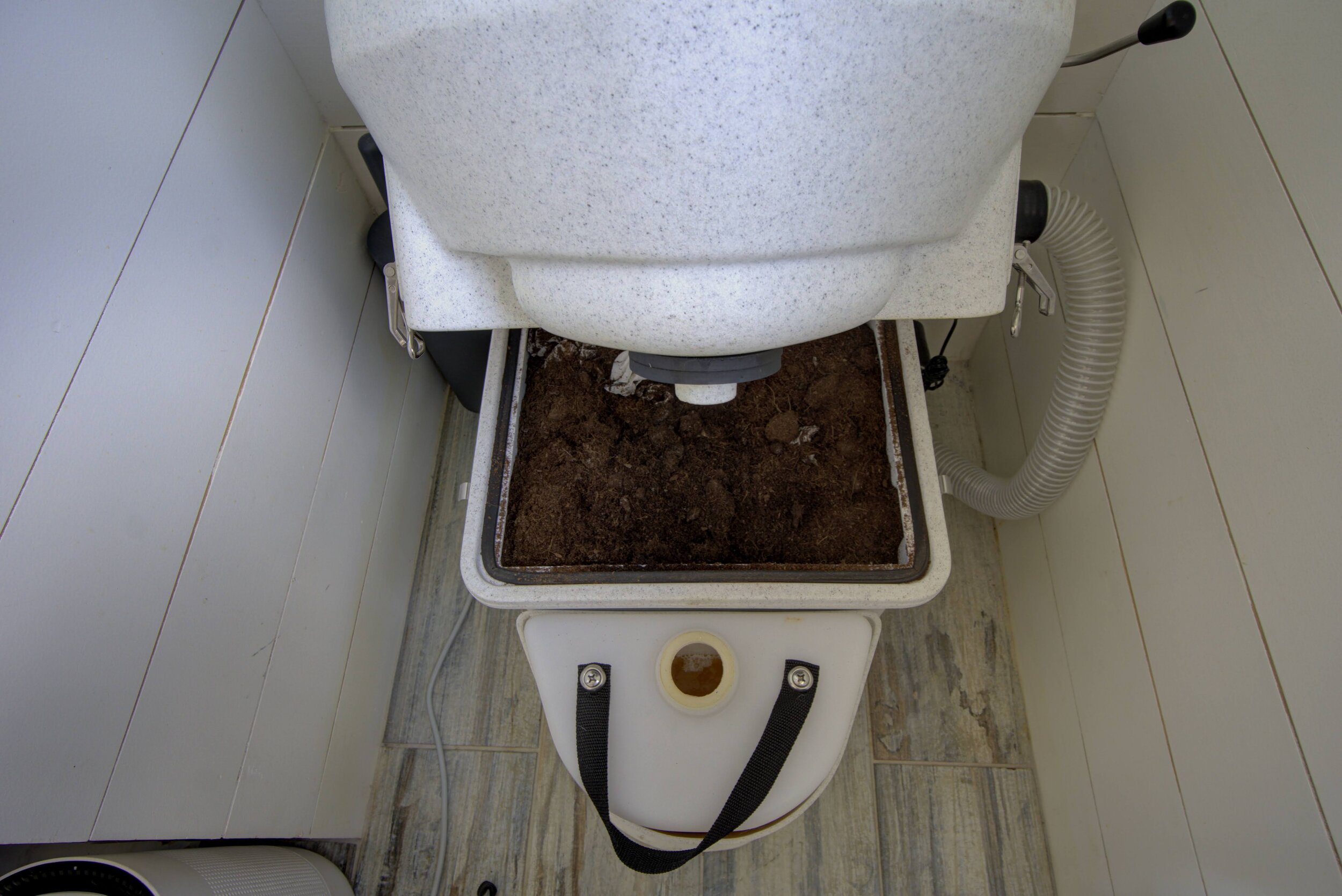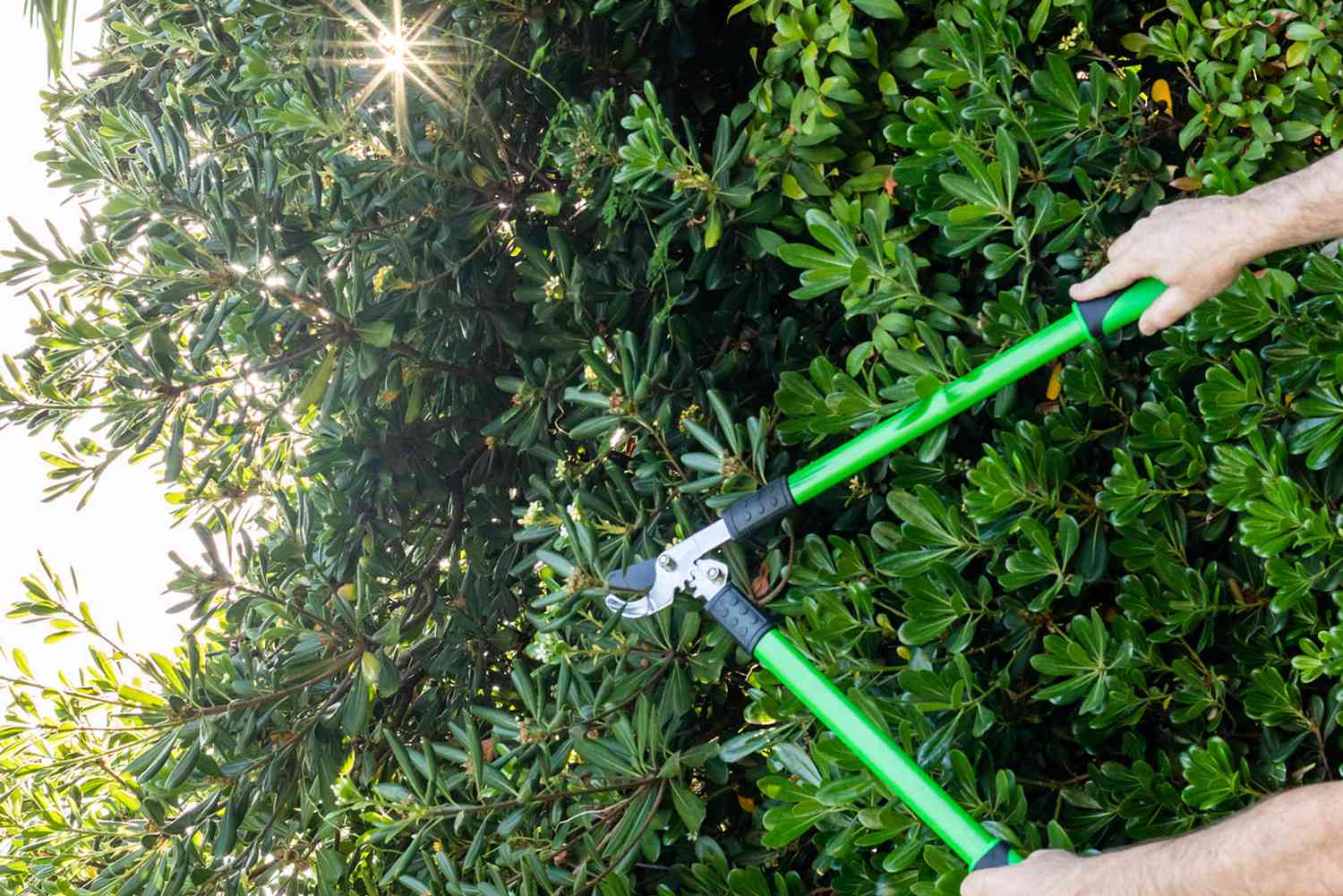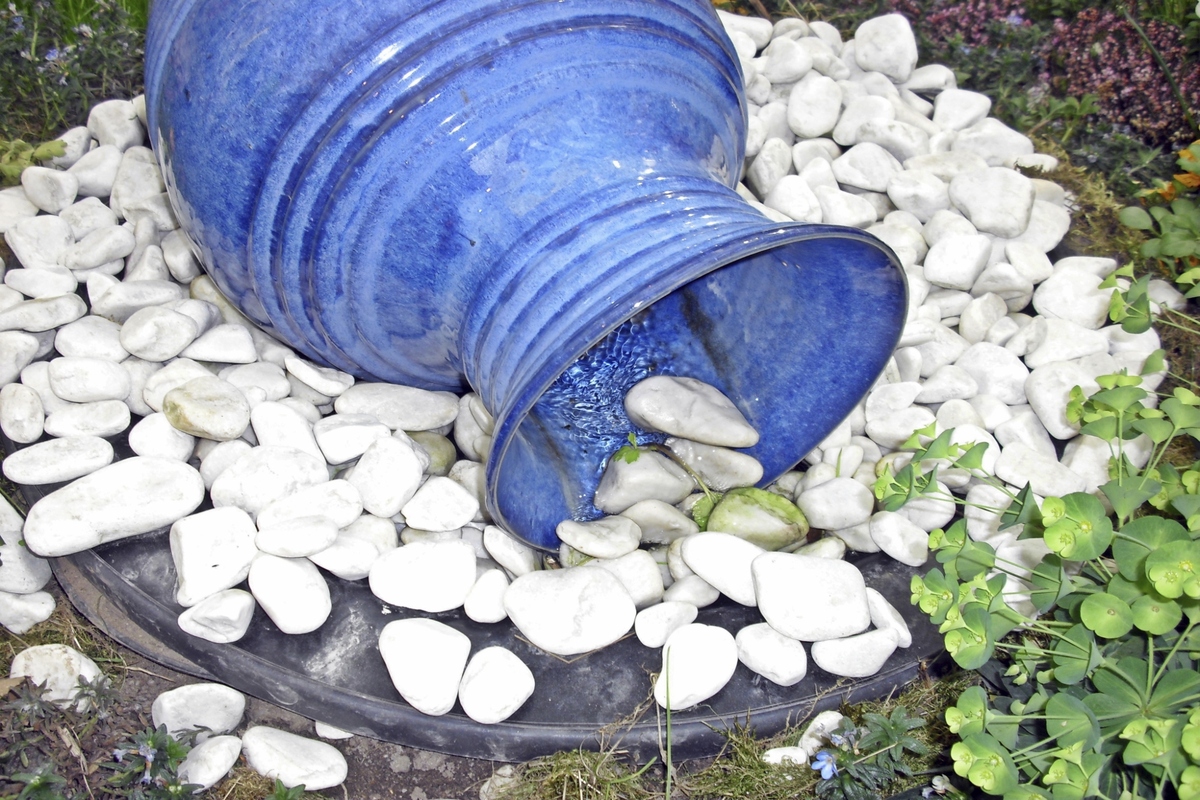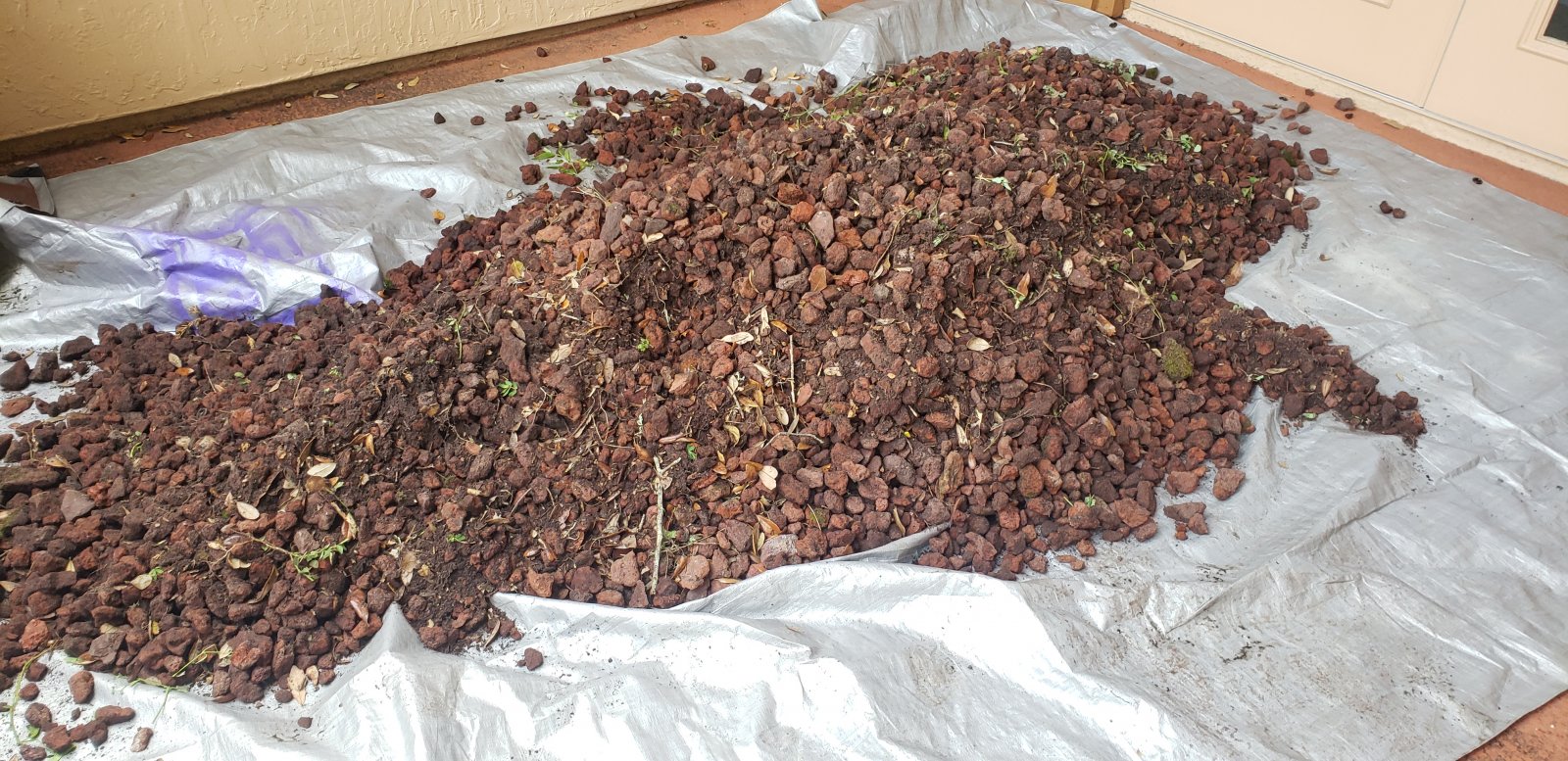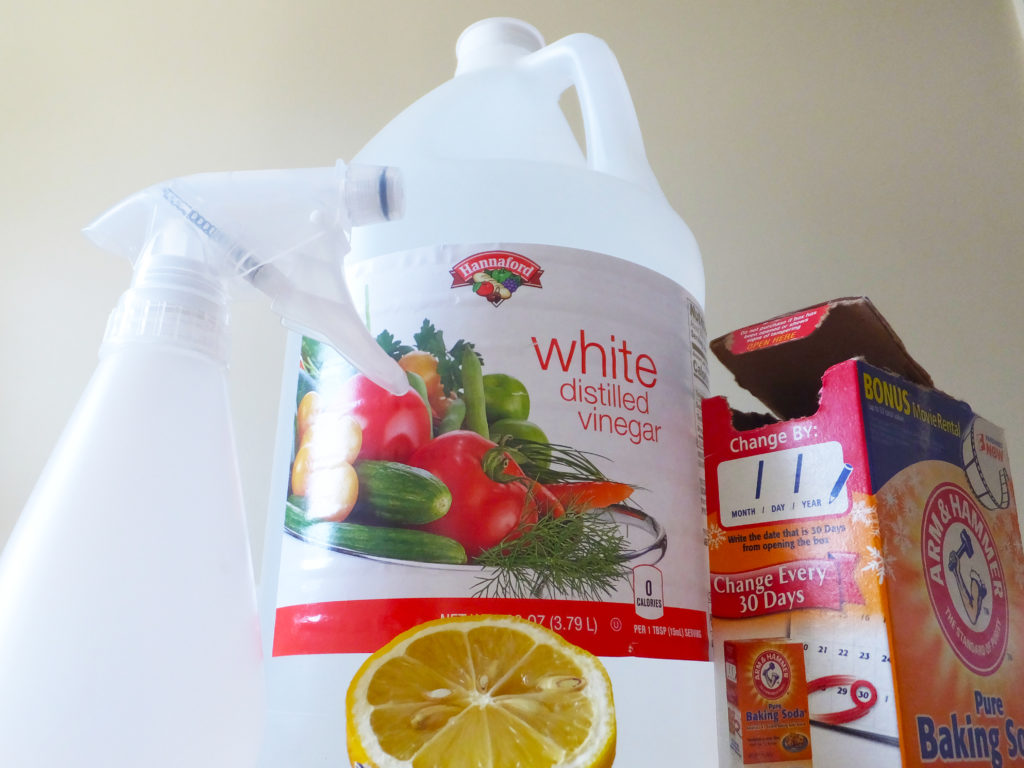Home>Gardening Techniques>DIY Projects>How To Clean Up Overgrown Backyard


DIY Projects
How To Clean Up Overgrown Backyard
Modified: January 22, 2024
Learn how to tackle your overgrown backyard with these helpful DIY projects. Transform your outdoor space into something beautiful and manageable.
(Many of the links in this article redirect to a specific reviewed product. Your purchase of these products through affiliate links helps to generate commission for Chicagolandgardening.com, at no extra cost. Learn more)
Table of Contents
Introduction
Welcome to the ultimate guide on how to clean up an overgrown backyard! If you’ve been neglecting your outdoor space and it’s become a jungle of tangled plants, weeds, and debris, fear not. With the right tools, a little elbow grease, and some expert knowledge, you can transform your backyard into a beautiful and functional outdoor oasis.
An overgrown backyard not only looks unappealing, but it can also harbor pests, block natural light, and make it challenging to enjoy outdoor activities. By following the steps in this guide, you’ll be able to assess the state of your backyard, clear away debris, trim and prune plants, remove weeds, repair structures, rejuvenate your lawn, dispose of waste responsibly, and maintain your backyard going forward.
Whether you’re a seasoned DIY enthusiast or a beginner, this guide is designed to help you tackle the task at hand. We’ll provide you with detailed instructions, helpful tips, and expert advice to ensure that your backyard cleanup project is a success.
So, grab your gardening gloves and let’s dive in! It’s time to reclaim your overgrown backyard and create a stunning outdoor space that you can be proud of.
Assessing the Overgrown Backyard
Before you roll up your sleeves and start clearing away the mess, it’s important to assess the condition of your overgrown backyard. This will help you understand the scope of the cleanup project and determine which areas require the most attention.
Begin by taking a walk around your backyard and make note of the following:
- The size of the overgrown area: Determine how much space in your backyard is affected by overgrowth. Is it limited to a specific section, or does it cover the entire yard?
- The types of plants and weeds: Identify the various plants and weeds growing in your backyard. This will help you tailor your approach when it comes to trimming, pruning, and weed removal.
- The condition of structures: Take a close look at any fences, sheds, or other structures in your backyard. Note if any repairs or replacements are necessary due to damage caused by overgrowth.
- The state of the lawn: Evaluate the condition of your lawn. Are there patches of dead grass, bare spots, or areas overrun by weeds?
- The presence of debris and junk: Observe if there is any debris, junk, or other unwanted items scattered throughout the overgrown areas.
By conducting a thorough assessment, you will have a clear understanding of the specific tasks that need to be addressed during your backyard cleanup. This will allow you to plan your approach and ensure that no important steps are overlooked.
Remember, every backyard is unique, and the level of overgrowth may vary. Don’t let the initial assessment overwhelm you. Instead, see it as an opportunity to transform your backyard into a beautiful and functional space that you can enjoy.
Clearing Debris and Junk
Once you’ve assessed the state of your overgrown backyard, the first step in the cleanup process is to clear away any debris and junk that may be cluttering the space. This will not only improve the overall appearance of your backyard but also create a safer and more organized environment.
Here are some steps you can follow to effectively clear debris and junk from your backyard:
- Gather the necessary tools: Before you begin, gather essential tools such as gloves, a rake, a shovel, and sturdy garbage bags or containers. These will help you handle and dispose of the debris safely.
- Start with large items: Begin by removing any large items such as fallen branches, broken pots, or old furniture. Make sure to properly dispose of these items by either recycling, donating, or arranging for their appropriate disposal.
- Rake and gather leaves: Use a rake to gather fallen leaves into piles. Consider composting them if you have a compost bin, or bag them up for collection if required in your area.
- Dispose of smaller debris: Use a shovel or your hands to collect smaller debris, such as twigs, stones, and other loose items. Place them in garbage bags or containers, making sure to seal them properly to prevent spills during disposal.
- Remove any hazardous materials: Be cautious of any hazardous materials that may be present, such as broken glass or sharp objects. Handle them carefully and dispose of them in a safe manner.
- Sweep and tidy up: Once all the debris and junk have been removed, use a broom or leaf blower to sweep away any remaining dirt or dust. This will give your backyard a cleaner and more polished look.
Remember, safety should always be a priority when clearing away debris and junk. Wear appropriate protective gear, such as gloves and closed-toe shoes, to prevent injuries.
By clearing debris and junk from your overgrown backyard, you’re taking the necessary first steps to transform the space into a more inviting and functional area.
Trimming and Pruning Plants
Once you’ve cleared away the debris and junk, the next step in cleaning up your overgrown backyard is to trim and prune the plants. This will not only promote their overall health but also help shape and rejuvenate the landscape.
Here’s a step-by-step guide on how to effectively trim and prune your overgrown plants:
- Identify the plants that need attention: Take a close look at each plant in your backyard and determine which ones are overgrown, have dead or diseased branches, or are blocking walkways or structures.
- Inspect for any potential hazards: Check for large branches that are hanging precariously or leaning towards structures. These branches should be addressed first, as they pose a risk of falling and causing damage.
- Get the right tools: Gather the necessary tools for the job, including sharp bypass pruners for smaller branches, loppers for thicker branches, and a pruning saw for larger limbs. Ensure that your tools are clean and in good working condition.
- Start with dead or diseased branches: Begin by pruning any dead or diseased branches, as these can affect the overall health of the plant. Cut them back to healthy growth or the main stem using clean, angled cuts.
- Remove overgrown branches: Trim back any overgrown branches to maintain a more manageable size and shape for the plant. Use the appropriate tools to make clean cuts just above a healthy bud or lateral branch.
- Thin out dense foliage: If plants have become too dense, thin them out by removing some of the interior branches. This will improve air circulation and allow sunlight to reach the lower parts of the plant.
- Shape and prune for aesthetics: Consider the overall design and aesthetic you want for your backyard and shape the plants accordingly. Trim hedges into neat and uniform shapes, and prune shrubs and trees to maintain a visually appealing form.
- Clean up and dispose of trimmings: As you trim and prune, collect and dispose of the trimmed branches and foliage. Depending on the size, you can either compost them or arrange for proper disposal.
Remember to research the specific requirements and best practices for pruning each type of plant in your backyard. Some plants may have unique needs, such as flowering times or specific techniques.
By trimming and pruning your overgrown plants, you’re not only improving their appearance but also ensuring their long-term health and vitality.
Removing Weeds and Unwanted Growth
One of the biggest challenges when dealing with an overgrown backyard is tackling the weeds and unwanted growth that have taken over. These can not only detract from the appearance of your outdoor space but also compete with your desirable plants for nutrients and water.
Here’s a step-by-step guide on how to effectively remove weeds and unwanted growth from your overgrown backyard:
- Identify the types of weeds: Take the time to identify the different types of weeds in your backyard. This will help you choose the most appropriate methods for their removal.
- Use manual methods: For small areas or individual weeds, hand-pulling is an effective method. Ensure that you remove weeds from the root to prevent regrowth. Use a hand tool, such as a trowel or weed puller, to facilitate the process.
- Consider using herbicides: If the weed infestation is extensive, you may need to consider using herbicides. Choose a selective herbicide that targets only the weeds and not your desired plants. Follow the instructions carefully for safe and effective use.
- Apply mulch: After removing the weeds, apply a layer of organic mulch, such as wood chips or straw, to help suppress future weed growth. Mulch also helps retain moisture in the soil and enhances the overall appearance of your backyard.
- Tackle unwanted growth: Apart from weeds, you may have unwanted growth like invasive plants or vines that have taken over. Use appropriate methods, such as cutting or pulling, to remove these unwanted plants and prevent them from spreading further.
- Maintain a regular maintenance routine: Weeds can quickly return, so it’s essential to maintain a regular maintenance routine. This includes regular weeding, monitoring for new growth, and promptly removing any weeds that appear.
It’s important to note that weed removal is an ongoing process. Be patient and persistent in your efforts, as it may take time to completely eradicate weeds from your overgrown backyard.
By removing weeds and unwanted growth, you’ll not only improve the aesthetics of your backyard but also provide a healthier environment for your desired plants to thrive.
Repairing or Replacing Fences and Structures
When tackling an overgrown backyard, it’s essential to assess the condition of any fences, sheds, or other structures in the area. Overgrowth can often lead to damage or deterioration, so addressing these issues is crucial to creating a safe and aesthetically pleasing outdoor space.
Here are some steps to follow when repairing or replacing fences and structures in your overgrown backyard:
- Inspect for damage: Walk around your backyard and carefully inspect the fences, sheds, or any other structures present. Look for signs of decay, rot, loose or broken boards, or sagging areas.
- Assess the extent of damage: Evaluate the severity of the damage. Determine if the structure can be repaired or if it needs to be completely replaced. Consider factors such as safety, stability, and overall appearance.
- Collect the necessary materials and tools: If you’re planning to repair the structure, gather the appropriate materials and tools. This may include replacement boards, nails, screws, a hammer, a drill, and a level.
- Repairing the structure: For fences, start by reinforcing any loose or wobbly posts. Replace any damaged boards, ensuring they are aligned and securely fastened. Use a level to ensure a straight and even appearance. For other structures, address specific issues such as repairing broken panels or reinforcing weak spots.
- Consider replacing if necessary: If the damage is extensive or the structure is beyond repair, it may be more cost-effective and time-efficient to replace it entirely. Research available options and choose a replacement that suits your preferences and budget.
- Enhance with a fresh coat of paint or stain: After repairing or replacing the structure, consider giving it a fresh coat of paint or stain. This not only improves its appearance but also protects it from the elements and prolongs its lifespan.
- Maintain regular upkeep: Regularly inspect your fences and structures for any signs of wear and tear. Address any small issues promptly to prevent them from becoming larger problems in the future.
Repairing or replacing fences and structures in your overgrown backyard not only improves their functionality but also enhances the overall look and feel of the space. It provides a sense of security and ensures the longevity of these important features.
Rejuvenating the Lawn
A lush and vibrant lawn is the centerpiece of any beautiful backyard. When dealing with an overgrown yard, it’s essential to rejuvenate and revive the lawn to create a healthy and visually appealing outdoor space.
Here’s a step-by-step guide on how to rejuvenate your lawn:
- Remove debris and weeds: Before you begin any lawn care, clear away any debris, fallen branches, and weeds that may be inhibiting the growth of your grass.
- Aerate the soil: Over time, the soil in your lawn can become compacted, making it difficult for grass roots to access water and nutrients. Use a lawn aerator to create small holes in the soil, allowing for better water and air circulation.
- Overseed bare spots: Identify any bare patches in your lawn and overseed them. Choose a grass seed that matches the existing grass type and spread it evenly over the bare areas. Rake the area gently to ensure good seed-to-soil contact.
- Fertilize: Apply a slow-release or organic fertilizer to provide essential nutrients to your lawn. Follow the instructions on the fertilizer package to ensure proper application rates and timing.
- Water regularly: Proper watering is crucial for the growth and health of your lawn. Water deeply, but infrequently, to encourage deep root growth. Aim for about one inch of water per week, including rainfall.
- Mow at the correct height: Set your lawnmower to the appropriate height for your grass type and avoid cutting more than one-third of the grass blade in a single mowing. Regular mowing helps to promote denser growth and discourages weed growth.
- Control weeds: Keep an eye out for any emerging weeds in your lawn and address them promptly. Use targeted weed control measures to minimize weed growth without harming your grass.
- Maintain a regular maintenance routine: Consistent care and maintenance are essential for a healthy lawn. Regularly mow, water, fertilize, and address any issues that arise to keep your lawn looking its best.
Rejuvenating your lawn may take time, patience, and consistent effort. However, with proper care and attention, you can transform your overgrown lawn into a lush and inviting green space.
Remember, different regions and grass types have different requirements for optimal growth. Research and follow the specific recommendations for your area to achieve the best results.
Disposing of Waste Properly
When cleaning up an overgrown backyard, you’re likely to accumulate a significant amount of waste, including plant debris, trimmings, and other materials. It is essential to dispose of this waste properly to maintain a clean and sustainable environment.
Here are some guidelines for disposing of waste from your backyard cleanup:
- Separate waste into appropriate categories: Sort the waste into different categories, such as plant material, organic waste, and non-recyclable items. This will help you determine the most suitable disposal methods for each type of waste.
- Compost plant material: If you have a compost bin or pile, consider composting plant materials such as leaves, grass clippings, and small branches. This not only reduces waste but also creates nutrient-rich compost for your garden.
- Arrange for green waste collection: Check with your local waste management facility or municipality to see if they offer green waste collection services. Some areas provide free or reduced-cost pickups specifically for yard waste.
- Dispose of non-recyclable items responsibly: Items such as broken tools, plastic pots, and other non-recyclable materials should be disposed of properly. Check with your local solid waste facility for guidelines on disposing of these items.
- Recycle eligible materials: Determine which materials from your cleanup can be recycled, such as plastic plant containers or metal garden tools. Rinse and sort these items according to your local recycling guidelines.
- Use designated drop-off sites: For larger or specialized items, such as old furniture or large tree branches, find designated drop-off sites or recycling centers in your area. These facilities can properly handle and process these materials.
- Avoid illegal dumping: It is important to dispose of waste responsibly and legally. Illegal dumping not only harms the environment but can also result in hefty fines. Ensure that you follow all local regulations and guidelines when disposing of waste.
By disposing of waste properly, you contribute to a cleaner and healthier environment. Additionally, recycling and composting help reduce greenhouse gas emissions and minimize the strain on landfills.
Remember to research and follow your local waste management guidelines, as regulations may vary depending on your location. By making conscious choices about waste disposal, you can do your part in promoting sustainability and environmental stewardship.
Maintaining the Backyard Going Forward
Once you have successfully cleaned up and rejuvenated your overgrown backyard, it’s important to establish a regular maintenance routine to keep it looking its best. With consistent care and attention, you can ensure that your outdoor space remains functional, aesthetically pleasing, and enjoyable to spend time in.
Here are some essential tips for maintaining your backyard going forward:
- Maintain a regular watering schedule: Proper watering is crucial for the health and vitality of your plants and lawn. Water deeply and infrequently, allowing the water to penetrate the soil and reach the root system.
- Mow and edge regularly: Keep your lawn looking well-manicured by maintaining a regular mowing schedule. Set your lawnmower to the appropriate height for your grass type and trim the edges for a clean and polished appearance.
- Weed regularly: Stay on top of weed control by regularly inspecting your yard for any new growth. Remove weeds promptly to prevent them from competing with your desired plants for resources.
- Prune and trim as needed: Monitor the growth of your plants and trees and prune or trim them as necessary. This will help maintain their shape, promote healthy growth, and prevent overgrowth.
- Fertilize appropriately: Apply fertilizers to your lawn and plants at the appropriate times and rates. Follow the instructions on the fertilizer packaging and consider using organic or slow-release fertilizers for long-lasting nourishment.
- Monitor for pests and diseases: Keep an eye out for any signs of pests or diseases on your plants. Take action immediately if you notice any issues, using appropriate methods such as organic pest control or targeted disease treatments.
- Regularly clean and maintain structures: Inspect and clean any fences, sheds, and other structures in your backyard on a regular basis. Repair or replace any damaged parts to maintain their functionality and appearance.
- Update and refresh your outdoor space: Consider making updates or additions to your backyard to keep it fresh and inviting. This could include adding new plants, installing outdoor furniture, or creating designated areas for specific activities.
- Stay informed and educated: Continue to expand your knowledge about gardening, landscaping, and backyard maintenance. Stay up-to-date with new techniques, trends, and best practices to enhance your efforts in maintaining your backyard.
By following these maintenance practices, you can enjoy the benefits of a well-maintained backyard throughout the year. Consistency is key, so establish a routine that works for you and make it a habit to regularly care for and maintain your outdoor space.
Remember, each backyard is unique, and the needs may vary. Pay attention to the specific requirements of your plants, lawn, and structures, and adjust your maintenance routine accordingly.
Conclusion
Congratulations on successfully tackling the task of cleaning up your overgrown backyard! By following the steps and guidelines outlined in this guide, you should now have a transformed outdoor space that is both beautiful and functional.
Remember, maintaining a well-kept backyard requires ongoing care and attention. Regular watering, mowing, pruning, and weeding will help ensure that your outdoor space continues to thrive and remain enjoyable.
As you maintain your backyard, take the opportunity to add your personal touch and make it a reflection of your unique style and preferences. Whether it’s creating a cozy seating area, planting colorful flowers, or incorporating interesting features, let your creativity shine through to truly make it your own.
Additionally, consider engaging in sustainable practices as you maintain your backyard. Composting, recycling, conserving water, and using organic products can help lessen your environmental impact and contribute to a greener and more eco-friendly outdoor space.
Remember that gardening and landscaping are continuous learning experiences. Stay curious, continue to expand your knowledge, and experiment with new plants, techniques, and designs. The more you engage with your backyard, the more you’ll discover its endless possibilities.
Lastly, take time to relax and enjoy the beauty of your revitalized backyard. Whether you’re hosting gatherings, playing with children, or simply unwinding after a long day, your rejuvenated outdoor space will provide you with a tranquil and refreshing retreat.
So, step outside, breathe in the fresh air, and revel in the satisfaction of transforming your overgrown backyard into a captivating sanctuary.

